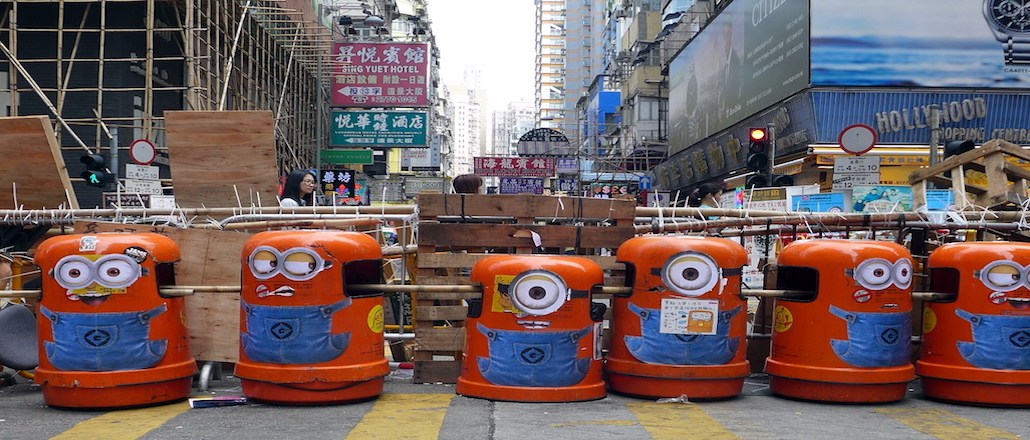Save 50% on a 3-month Digiday+ membership. Ends Dec 5.

Fake news is hot right now, which means it’s a great time for brand safety vendors to pitch advertisers new products.
For many vendors, blacklists are all they have in the arsenal to block ads from appearing on undesirable websites. But blacklists often fail in programmatic buying, and with brand anxiety high post election, some vendors are capitalizing on the zeitgeist by developing products that block ads from reaching fake news websites. Sources were split on whether these products will provide real value or are just another PR stunt.
“Kudos to them, but it just looks like a news-jacking play,” said one ad tech exec. Another added, “This is an easy marketing gimmick for people to hop onto.”
Last week, DoubleVerify announced a new product for weeding out websites associated with false politically-charged articles. Essentially, DoubleVerify groups these inflammatory sites together as a new brand-unsafe category, which allows advertisers to more easily exclude them. The list already includes hundreds of sites and will be continuously updated, said DoubleVerify CEO Wayne Gattinella.
“Yes, we did put it out quickly to address a topic that’s hot right now,” said Gattinella when asked if his company was merely making a PR push. “But the need came from advertisers who came to us over the last six weeks who are feeling pressure [from the brands they represent] to prevent ads from showing up on questionable sites.”
Gattinella insisted that DoubleVerify’s fake news product is much more than a gimmick. Within two days of its announcement, more than 100 national brands signed on to use it, as have a handful of programmatic companies, he said, though he declined to name any of them.
Fake news sites typically share similar characteristics, which often allows them to be algorithmically identifiable, Gattienalla said. Using machine learning, DoubleVerify looks for indicators across page design, headline structure, sentence structure, how much traffic comes from a single section on the website and how many total authors a website has. Then after the machines are finished, each site goes through a human audit before it’s dumped into the fake news category.
Ad position: web_incontent_pos1
DoubleVerify’s product blocks entire domains, but some sources said that excluding at the page level would be more effective for advertisers. Although brands want to avoid the most heinous content on these websites, they still may want the cheap reach found on less-offensive articles on these websites, said Gina Kim, vp of business development at programmatic platform Adelphic.
Sizmek is working on a product that targets fake news at the page level. But the product won’t come out until 2017, said Mike Caprio, Sizmek general manager of programmatic.
“It’s easy to slap a new name on this,” Caprio said. “But I want to make sure that when we do it, we do it thoughtfully, as opposed to doing it for quick attention.”
Although the product is far from finalized, Sizmek is looking at flagging particular articles as “unconfirmed trends,” Caprio said. Using machine learning, Sizmek would scan articles for their sentiment and tone. Suspicious articles would get compared against dozens of reputable news sources such as The Wall Street Journal and CNN, and if the premise in the suspicious article (e.g. Hillary Clinton will be indicted by the FBI) isn’t verified by reliable news sources, then the article gets flagged.
Several brand safety companies told Digiday that since the election, they’ve received calls from dozens of brands who are interested in blocking their ads form fake news sites. “It [fake news] may be terrible for America, but it’s good for business,” one brand safety rep remarked.
Ad position: web_incontent_pos2
Michael Tiffany, CEO of WhiteOps, said that what gets overlooked in the fake news discussion is that politics is just one slice of it. Sports, entertainment and medical news are suffering from a similar problem, which he believes has contributed to climate change and vaccination trutherism.
“This problem is not going away,” said Trust Metrics CEO Marc Goldberg. “But there are some solutions that can help it from getting so big. But we need help on the supply side to not let these guys [fake news] in, in the first.”
Image courtesy of Creative Commons
More in Media

Digiday+ Research Subscription Index 2025: Subscription strategies from Bloomberg, The New York Times, Vox and others
Digiday’s third annual Subscription Index examines and measures publishers’ subscription strategies to identify common approaches and key tactics among Bloomberg, The New York Times, Vox and others.

From lawsuits to lobbying: How publishers are fighting AI
We may be closing out 2025, but publishers aren’t retreating from the battle of AI search — some are escalating it, and they expect the fight to stretch deep into 2026.

Media Briefing: Publishers turn to vertical video to compete with creators and grow ad revenue in 2026
Publishers add vertical video feeds to their sites to boost engagement, attract video ad spend and compete with news creators.
Ad position: web_bfu